-
ARTÍCULO ORIGINAL14/07/2021
Factors associated with alcohol, tobacco and illicit drug use among Brazilian undergraduate students
Revista Brasileira de Enfermagem. 2021;74(3):e20201244
Resumen
ARTÍCULO ORIGINALFactors associated with alcohol, tobacco and illicit drug use among Brazilian undergraduate students
Revista Brasileira de Enfermagem. 2021;74(3):e20201244
DOI 10.1590/0034-7167-2020-1244
Visualizações0Ver maisABSTRACT
Objectives:
to analyze the factors associated with the use of alcohol, tobacco and illicit drugs among Brazilian undergraduate students.
Methods:
observational, cross-sectional study, with convenience sampling, conducted in 2014/2015, involving institutional data and a self-completed online questionnaire, analyzed using measures of frequency, central tendency/dispersion and logistic regression.
Results:
among 126,326 students, 62.8% reported alcohol use; 11%, tobacco; and 7.5%, illicit drugs. Several academic factors-such as not residing with family (sororities [alcohol: aOR:2.38;95%CI:2.28-2.48; tobacco: AOR:2.20;95%CI:2.09-2.33; illicit drugs: AOR:2.53;95%CI:2.38-2.70]), acting in university movements (student [alcohol: AOR:1.74;95%CI:1.65-1.83; tobacco: AOR:1.97;95%CI:1.86-2.08; illicit drugs: AOR:2.43;95%CI:2.28-2.59] and religious [alcohol: AOR:0.28;95%CI:0.26-0.29; tobacco: AOR:0.23;95%CI:0.21-0.26; illicit drugs: AOR:0.18;95%CI:0.16-0.21]) and lack of discipline/study habit (alcohol: AOR:1.41;95%CI:1.37-1.45; tobacco: AOR:1.53;95%CI:1.46-1.59; illicit drugs: AOR:1.85;95%CI:1.76-1.94) – were associated with the use of the three categories of substances.
Conclusions:
we identified that a number of academic factors are associated with licit and illicit drug use. These findings may help in designing preventive strategies among college students.
-
ARTÍCULO ORIGINAL14/07/2021
Association between family dynamics and use of alcohol, tobacco, and other drugs by adolescents
Revista Brasileira de Enfermagem. 2021;74(3):e20200829
Resumen
ARTÍCULO ORIGINALAssociation between family dynamics and use of alcohol, tobacco, and other drugs by adolescents
Revista Brasileira de Enfermagem. 2021;74(3):e20200829
DOI 10.1590/0034-7167-2020-0829
Visualizações0Ver maisABSTRACT
Objectives:
to analyze, in the light of systemic thinking, the association between family dynamics and the use of alcohol, tobacco, and other drugs by adolescents throughout life.
Methods:
a cross-sectional descriptive study was conducted in nine public schools in the city of Recife. Three hundred and sixty-four adolescents aged 14 to 19 years participated. We used three questionnaires: The Alcohol, Smoking, and Substance Involvement Screening Test, a reduced version of the Drug Use Screening Inventory; and a sociodemographic questionnaire.
Results:
there was an association between parents/guardians ignoring what the child considers meaningful to him and the consumption of alcohol and tobacco by adolescents; we also verified an association between the occurrence of conflicting relationships and the consumption of illicit drugs by adolescents.
Conclusions:
it confirmed that disorganization in the family system, marked by impairments in emotional connections among members, and fragility in the sense of belonging are associated with the consumption of drugs in life by adolescents.
-
ARTÍCULO ORIGINAL14/07/2021
Challenges for adherence to bacterial resistance actions in large hospitals
Revista Brasileira de Enfermagem. 2021;74(3):e20200510
Resumen
ARTÍCULO ORIGINALChallenges for adherence to bacterial resistance actions in large hospitals
Revista Brasileira de Enfermagem. 2021;74(3):e20200510
DOI 10.1590/0034-7167-2020-0510
Visualizações0Ver maisABSTRACT
Objectives:
to identify the challenges to actions to contain bacterial resistance.
Methods:
cross-sectional study, carried out in 30 large-sized hospitals in Minas Gerais, from 2018 to 2019. The professionals were interviewed, and the environment and actions to prevent bacterial resistance were observed.
Results:
regarding the knowledge of health care professionals about the measures of bacterial resistance prevention, 78.3% did not correctly describe the five moments of hand hygiene, and 76.6% did not correctly describe the measures to control bacterial resistance. The simple hygiene of hands, followed by alcohol rubbing was predominant (48.3%) among workers, and soap dispensers were next to alcohol dispensers in 58.3% of the nursing stations in care units.
Conclusions:
the insufficient knowledge from the professionals, which is a failure related to the physical structure and to personal protection equipment, are factors that difficult the adherence to measures to contain bacterial resistance in hospitals.
-
ARTÍCULO DE REVISIÓN14/07/2021
Symptom management theory applied to nursing care: scoping review
Revista Brasileira de Enfermagem. 2021;74(3):e20201004
Resumen
ARTÍCULO DE REVISIÓNSymptom management theory applied to nursing care: scoping review
Revista Brasileira de Enfermagem. 2021;74(3):e20201004
DOI 10.1590/0034-7167-2020-1004
Visualizações0Ver maisABSTRACT
Objectives:
to identify publications about the applicability of the Symptom Management Theory in nursing care to pediatric, adolescent, adult and elderly patients.
Methods:
scoping review following the steps: definition of the objective, research question and inclusion criteria; search, selection and analysis of publications; synthesis of results. The search occurred in the VHL, SciELO, CAPES and PubMed Journals Portal bases, contemplating publications between 1994 and July 2020.
Results:
out of 3,286 studies, ten were selected, published between 2008 and 2019. They described the relationships between the participants and the domains (person, environment, health and disease), components (symptom experience, management strategies, results) and presented strategies for symptom management.
Conclusions:
the Symptom Management Theory was considered applicable to the participants of the studies and to nursing care. It was concluded that understanding the interaction of these elements is essential to plan actions aimed at controlling symptoms effectively.
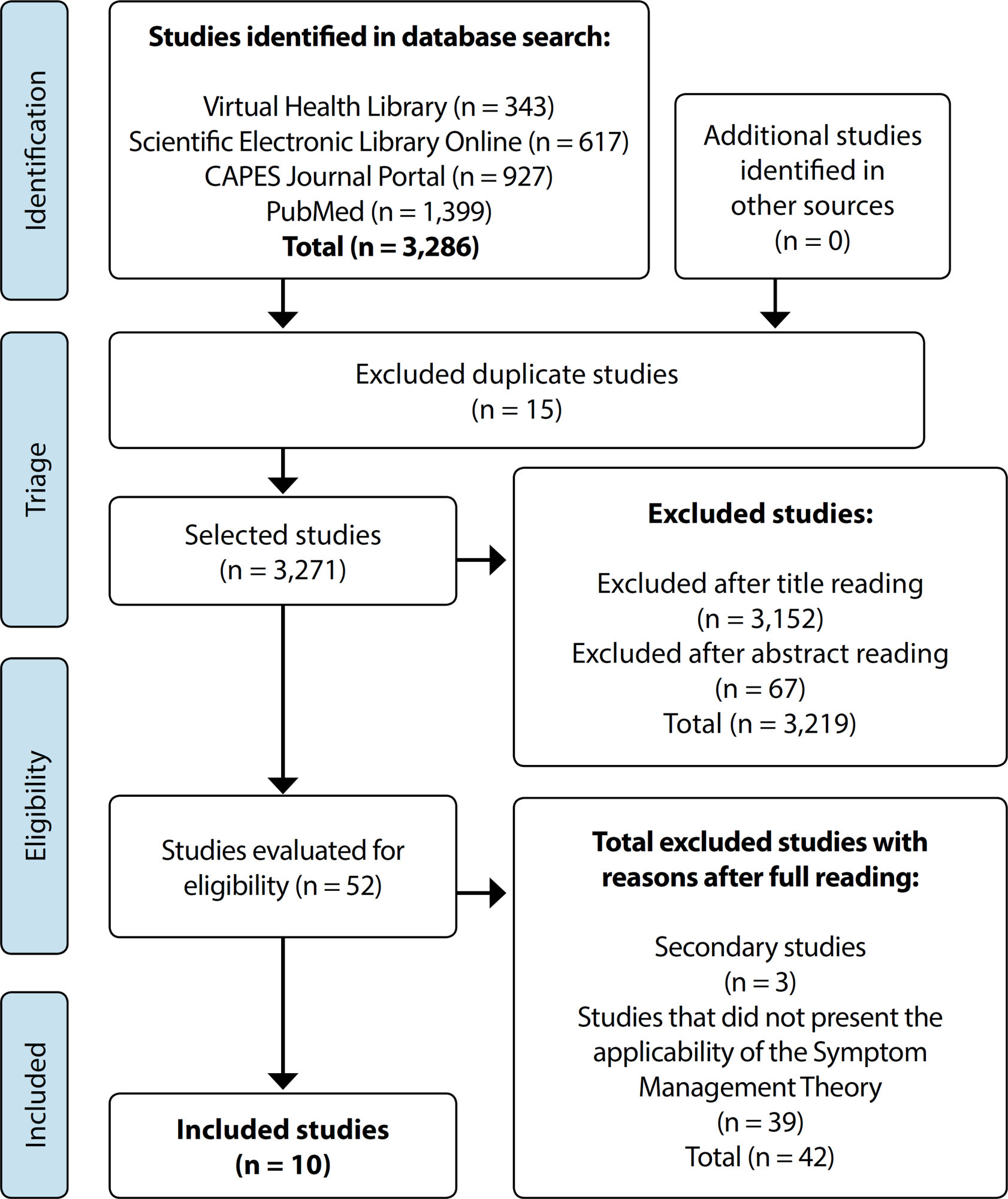
-
ARTÍCULO ORIGINAL14/07/2021
Manchester Triage System: assessment in an emergency hospital service
Revista Brasileira de Enfermagem. 2021;74(3):e20201361
Resumen
ARTÍCULO ORIGINALManchester Triage System: assessment in an emergency hospital service
Revista Brasileira de Enfermagem. 2021;74(3):e20201361
DOI 10.1590/0034-7167-2020-1361
Visualizações0Ver maisABSTRACT
Objectives:
to analyze demographic data, clinical profile and outcomes of patients in emergency services according to Manchester Triage System’s priority level.
Methods:
a cross-sectional, analytical study, carried out with 3,624 medical records. For statistical analysis, the Chi-Square Test was used.
Results:
white individuals were more advanced in age. In the red and white categories, there was a higher percentage of men when compared to women (p=0.0018) and higher prevalence of personal history. Yellow priority patients had higher percentage of pain (p<0.0001). Those in red category had a higher frequency of altered vital signs, external causes, and death outcome. There was a higher percentage of exams performed and hospitalization in the orange category. Blue priority patients had a higher percentage of non-specific complaints and dismissal after risk stratification.
Conclusions:
a higher percentage of altered vital signs, number of tests performed, hospitalization and death were evidenced in Manchester protocol’s high priority categories.
-
14/07/2021
Enfermería y enfermedades infecciosas: tres lecciones de la historia
Revista Brasileira de Enfermagem. 2021;74(3):e740301
Resumen
Enfermería y enfermedades infecciosas: tres lecciones de la historia
Revista Brasileira de Enfermagem. 2021;74(3):e740301
DOI 10.1590/0034-7167.2021740301
Visualizações0Hay algo extraño en el hecho de que el bicentenario del nacimiento de Florence Nightingale y el Año del Personal de Enfermería y de Partería de la OMS se lanzaran con una pandemia y el mensaje de regreso al futuro de “lávate las manos”. En Notes on Nursing, su manual doméstico extremadamente popular sobre cómo […]Ver mais -
ARTÍCULO ORIGINAL14/07/2021
Venous ulcer healing treated with conventional therapy and adjuvant laser: is there a difference?
Revista Brasileira de Enfermagem. 2021;74(3):e20201117
Resumen
ARTÍCULO ORIGINALVenous ulcer healing treated with conventional therapy and adjuvant laser: is there a difference?
Revista Brasileira de Enfermagem. 2021;74(3):e20201117
DOI 10.1590/0034-7167-2020-1117
Visualizações0Ver maisABSTRACT
Objectives:
to evaluate the effects of venous ulcer healing in patients after six months of conventional treatment and adjuvant low-power laser therapy.
Methods:
prospective cohort study nested in a randomized clinical trial with 38 patients, allocated into an intervention group (conventional treatment and adjuvant laser therapy) and a control group (conventional treatment). Patients were followed up as outpatients, sociodemographic and clinical variables were collected, and indicators of the outcomes Wound healing: secondary intention (1103) and Tissue integrity: skin and mucous membranes(1101) of the Nursing Outcomes Classification. Generalized estimating equations, Kaplan-Meier tests, and robust Poisson regression were used in the analysis.
Results:
the clinical indicators Decreased wound size and Scar formation showed a statistically significant difference in the intervention group, higher number of healed wounds, lower rate, longer time to relapse.
Conclusions:
laser therapy adjuvant to conventional treatment returned better results in healing and lower recurrence rates after six months of intervention.
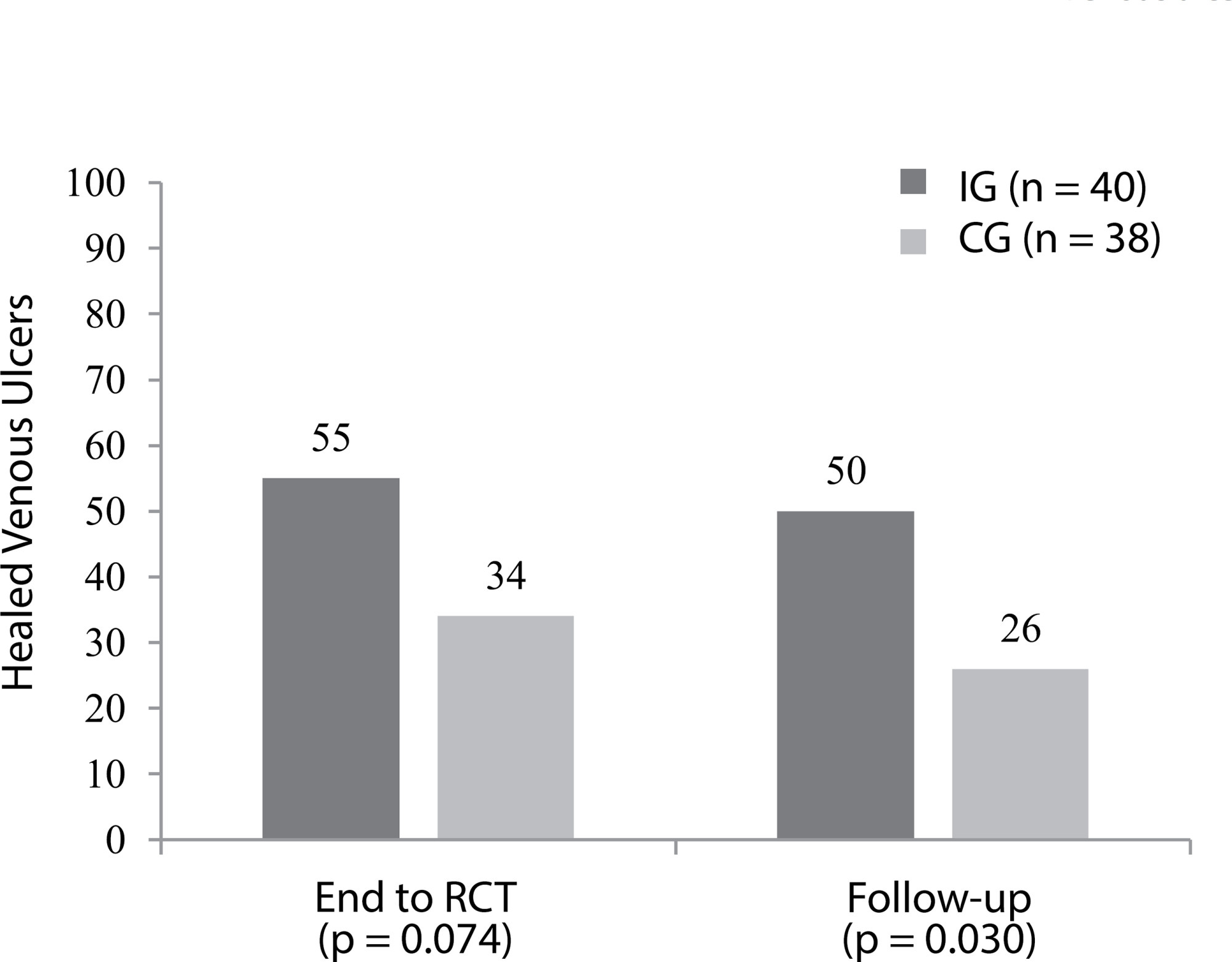
-
ARTÍCULO ORIGINAL14/07/2021
Impact of the contamination time by Escherichia coli on biofilm formation in surgical instruments
Revista Brasileira de Enfermagem. 2021;74(3):e20200759
Resumen
ARTÍCULO ORIGINALImpact of the contamination time by Escherichia coli on biofilm formation in surgical instruments
Revista Brasileira de Enfermagem. 2021;74(3):e20200759
DOI 10.1590/0034-7167-2020-0759
Visualizações1Ver maisABSTRACT
Objectives:
to evaluate the microbial load and adherence of Escherichia coli in different areas of the surgical instrument surface exposed to experimental contamination over time.
Methods:
experimental study in which fragments of crile forceps (serrated, rod and rack) were contaminated by immersion in Tryptic Soy Broth, containing 106 CFU/mL of E. coli, for 1, 2, 4, 6, 8, 12 and 24 hours. Microbial load and bacterial adherence were evaluated using microbiological culture and scanning electron microscopy, respectively.
Results:
there was an increase in the microbial load on the surgical instrument, proportional to the contamination interval, ranging from 102 after 1 hour to 105 CFU/cm2 in 24 hours. The presence of exopolysaccharide was detected after two hours of contamination.
Conclusions:
microbial load and adhesion of E. coli increased over time, reaching 105 CFU/cm2 after 24 hours of contamination, starting biofilm formation after two hours.
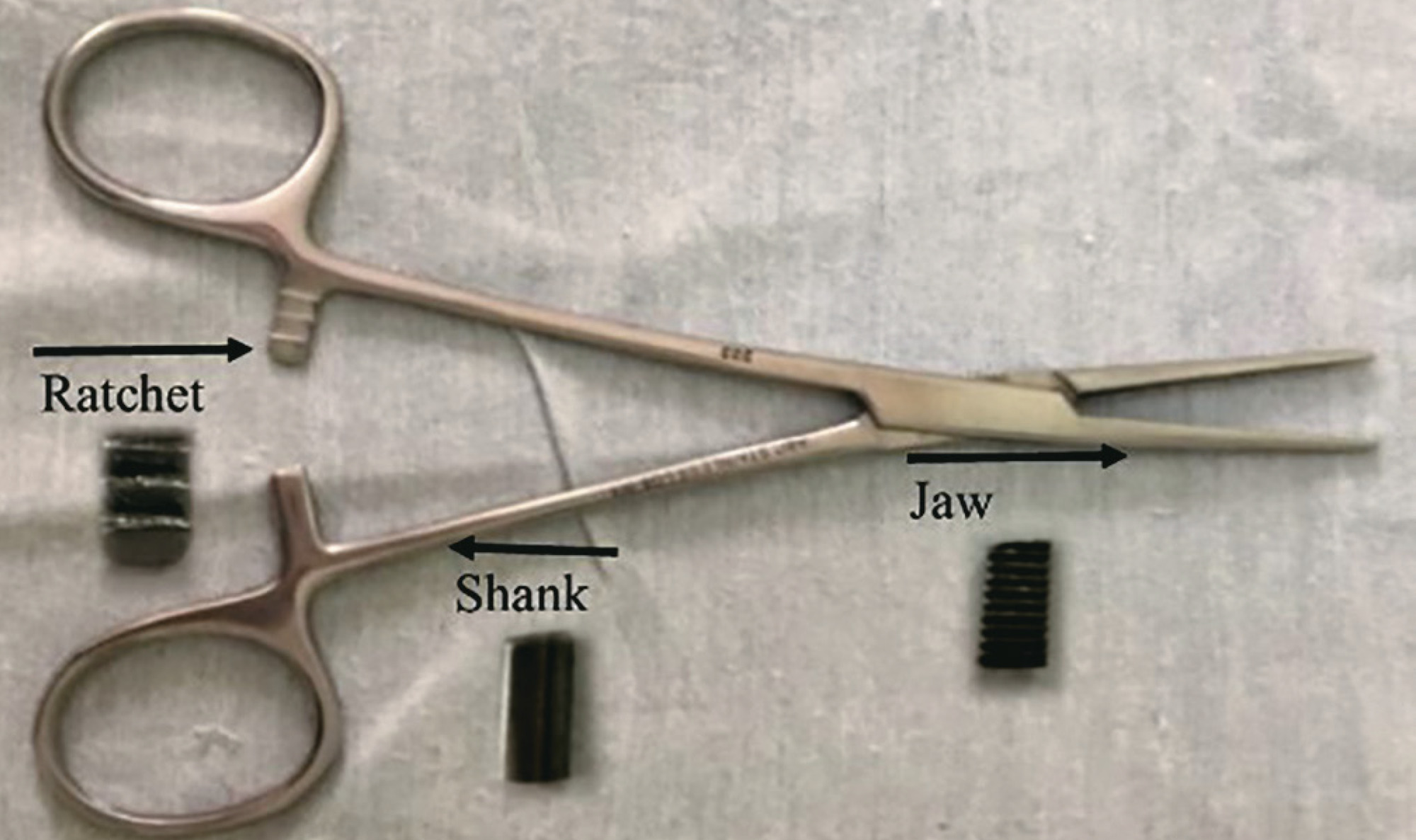
-
ARTÍCULO ORIGINAL08/06/2020
Usabilidade de um aplicativo móvel sobre o autocuidado com o pé diabético
Revista Brasileira de Enfermagem. 2020;73(4):e20180862
Resumen
ARTÍCULO ORIGINALUsabilidade de um aplicativo móvel sobre o autocuidado com o pé diabético
Revista Brasileira de Enfermagem. 2020;73(4):e20180862
DOI 10.1590/0034-7167-2018-0862
Visualizações0Ver maisRESUMO
Objetivos:
avaliar a usabilidade pelo usuário final de um protótipo de aplicativo para o autocuidado com o pé diabético.
Métodos:
estudo descritivo, de avaliação heurística da usabilidade de um aplicativo híbrido. Participaram 15 usuários de um serviço ambulatorial de atenção à pessoa com diabetes de uma capital do Nordeste brasileiro durante o mês de abril de 2018. Foi aplicado o instrumento de mensuração de usabilidade chamado Smartphone Usability questionnaiRE.
Resultados:
obteve-se como menor escore 77 e maior 112, com média de usabilidade geral de 96,1 pontos. A usabilidade foi enquadrada nos dois últimos níveis, 70 e 80. Os usuários passam a concordar fortemente (nível 70) e totalmente (nível 80) com os itens avaliados, o que representa boa usabilidade do protótipo de aplicativo.
Conclus
ões: o produto final desenvolvido tem foco nas necessidades e exigências do usuário, o que pode garantir a usabilidade, com base na tríade eficácia, eficiência e satisfação.
-
ARTÍCULO ORIGINAL18/10/2022
Percurso metodológico para alcance do grau de saturação na pesquisa qualitativa: teoria fundamentada
Revista Brasileira de Enfermagem. 2022;75(2):e20201379
Resumen
ARTÍCULO ORIGINALPercurso metodológico para alcance do grau de saturação na pesquisa qualitativa: teoria fundamentada
Revista Brasileira de Enfermagem. 2022;75(2):e20201379
DOI 10.1590/0034-7167-2020-1379
Visualizações0Ver maisRESUMO
Objetivos:
alcançar o grau de saturação em estudo que aplicou a teoria fundamentada.
Métodos:
pesquisa qualitativa, realizada em quatro Unidades Saúde da Família, entre junho de 2018 e maio de 2019. Os dados das entrevistas com 30 profissionais de saúde e observação não participante foram codificados nas etapas: aberta, axial e integração.
Resultados:
o grau de saturação foi alcançado por dois modelos conceituais – saturação teórica e temática indutiva. Foram considerados para a saturação teórica: o desenvolvimento dos códigos conceituais e a observação, na coleta e análise dos dados, quando geravam novas categorias/subcategorias ou apenas indicavam instâncias crescentes. Para a saturação temática indutiva, destacou-se a utilização de novos códigos baseados em cada entrevista.
Considerações Finais:
a esquematização visual para a quantidade de códigos, abrangência teórica dos conceitos e delimitação dos grupos amostrais orientou a identificação do grau de saturação para o desenvolvimento do corpo conceitual que sustentou a teoria substantiva.
-
ARTÍCULO ORIGINAL05/12/2019
Elderly caregivers of the elderly: frailty, loneliness and depressive symptoms
Revista Brasileira de Enfermagem. 2019;72:88-96
Resumen
ARTÍCULO ORIGINALElderly caregivers of the elderly: frailty, loneliness and depressive symptoms
Revista Brasileira de Enfermagem. 2019;72:88-96
DOI 10.1590/0034-7167-2018-0137
Visualizações0Ver maisABSTRACT
Objective:
to investigate the association between frailty, loneliness and depressive symptoms of elderly caregivers.
Method:
a cross – sectional study carried out with 341 elderly caregivers enrolled in Family Health Units of a city in the countryside of São Paulo State. The interviews were domiciliary and included questionnaire for characterization of the caregiver, Fried’s frailty phenotype, family APGAR (family functionality), Geriatric Depression Scale (depressive symptoms) and item 3 of the Herth Hope Scale (loneliness). Logistic regression was used to analyze the association between depressive symptoms and solitude (independent variables), and frailty and pre-frailty (dependent variables).
Results:
there was an association between frailty, loneliness and depressive symptoms. Elderly caregivers had increased odds of 158% presenting pre-frailty, and 360% of frailty. Elderly caregivers with depressive symptoms had an increased chance of 242% of presenting fragility.
Conclusion:
elderly and lonely caregivers with depressive symptoms are more likely to be frail and pre-frail.
-
REFLEXIÓN03/05/2021
A teoria de Florence Nightingale e suas contribuições para o pensamento crítico holístico na enfermagem
Revista Brasileira de Enfermagem. 2021;74(2):e20200139
Resumen
REFLEXIÓNA teoria de Florence Nightingale e suas contribuições para o pensamento crítico holístico na enfermagem
Revista Brasileira de Enfermagem. 2021;74(2):e20200139
DOI 10.1590/0034-7167-2020-0139
Visualizações0RESUMO
Objetivo:
refletir sobre o legado de Florence Nightingale e descrever suas contribuições para o pensamento crítico holístico na enfermagem.
Métodos:
trata-se de uma reflexão teórica, para a qual serviram de base produções científicas sobre a teoria ambientalista de Florence Nightingale, publicadas em periódicos nacionais e internacionais.
Resultados:
a filosofia e os ensinamentos de Florence Nightingale enfatizam que a enfermeira deve usar o cérebro, o coração e as mãos na criação de ambientes de cura, para cuidar do corpo do paciente, de sua mente e de seu espírito. A enfermagem, desde a época de Nightingale, vem construindo o paradigma holístico, em todas as escolas de pensamento, com vistas a uma abordagem humanística do ser humano em sua indivisível relação com o ambiente.
Considerações finais:
as contribuições de Florence ao pensamento crítico holístico na enfermagem são evidentes, constituindo o diferencial do enfermeiro na prática clínica.
Palavras-chave: Cuidados de EnfermagemEnfermagemHistória da EnfermagemPensamento CríticoTeoria de EnfermagemVer mais -
19/08/2019
Clinical simulation in nursing education in intensive therapy: an integrative review
Revista Brasileira de Enfermagem. 2019;72(4):1061-1070
Resumen
Clinical simulation in nursing education in intensive therapy: an integrative review
Revista Brasileira de Enfermagem. 2019;72(4):1061-1070
DOI 10.1590/0034-7167-2018-0217
Visualizações0Ver maisABSTRACT
Objective:
to analyze the publications on clinical simulation practices for education in Nursing in Intensive Care.
Method:
an integrative review carried out through LILACS, PubMed, Cochrane Library, CINAHL and SciELO databases, of articles published from 2008 to 2017.
Results:
29 articles were selected, of which 76% discuss the use of simulation in continuing education of nursing professionals, while the others describe their use for student education. There is a higher prevalence of studies with a level of evidence 6 (17), with 28 international publications. There was an increase in scientific production, with 16 articles published in the last three years.
Conclusion:
variables after simulation use, such as confidence, communication skills, efficiency in the identification of clinical worsening of patients, development of technical skills, teamwork and clinical decision-making, presented a significant improvement, demonstrating that this tool is effective in qualifying care for critical patients.
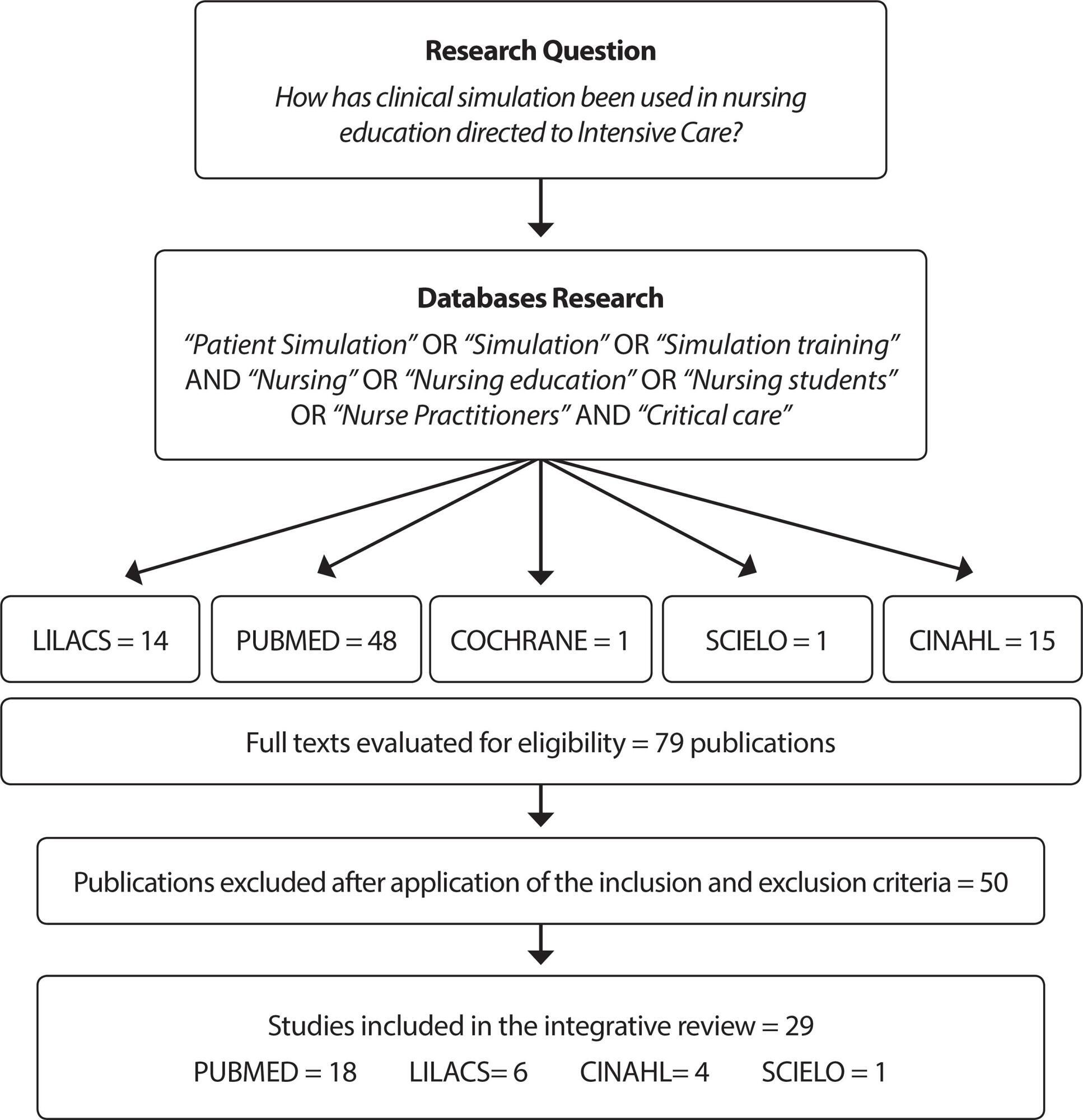
-
ARTÍCULO DE REVISIÓN26/06/2023
Barriers to Pre-Exposure Prophylaxis (PrEP) use for HIV: an integrative review
Revista Brasileira de Enfermagem. 2023;76(3):e20210963
Resumen
ARTÍCULO DE REVISIÓNBarriers to Pre-Exposure Prophylaxis (PrEP) use for HIV: an integrative review
Revista Brasileira de Enfermagem. 2023;76(3):e20210963
DOI 10.1590/0034-7167-2021-0963
Visualizações0Ver maisABSTRACT
Objectives:
to identify and synthesize scientific evidence on the barriers and difficulties for Pre-exposure Prophylaxis (PrEP) use and compliance for HIV.
Methods:
an integrative literature review, using the MEDLINE/PubMed, Cumulative Index to Nursing and Allied Health Literature (CINAHL), Academic Search Premier and Scopus (Elsevier) databases.
Results:
all (100%) the articles included identified that PrEP users experience some type of structural barrier related to health services such as long distance from the units, suboptimal logistics for taking pills and professional resistance to prescribing PrEP. Furthermore, 63.21% identified social barriers, such as stigma about sexuality and HIV, in addition to individual barriers such as alcohol use, adverse effects, and concerns about long-term toxicity.
Conclusions:
the barriers to PrEP use are multifactorial. Effective interventions are needed to support PrEP users in accessing, complying with, and retaining health services.
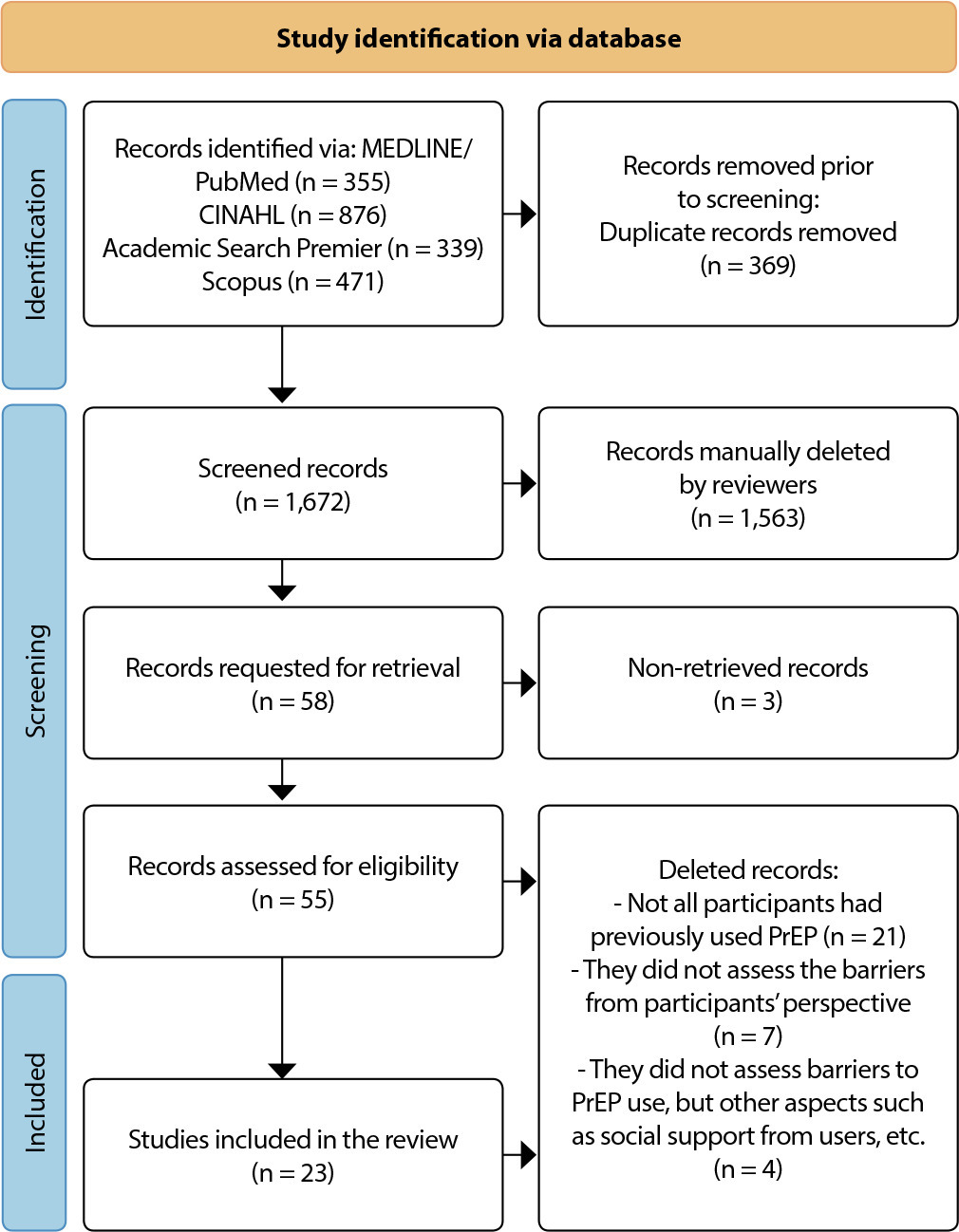
-
ARTÍCULO ORIGINAL21/10/2019
Coping religioso/espiritual e a angústia espiritual em pessoas com câncer
Revista Brasileira de Enfermagem. 2019;72(6):1534-1540
Resumen
ARTÍCULO ORIGINALCoping religioso/espiritual e a angústia espiritual em pessoas com câncer
Revista Brasileira de Enfermagem. 2019;72(6):1534-1540
DOI 10.1590/0034-7167-2018-0585
Visualizações1Ver maisRESUMO
Objetivo:
Investigar a relação entre presença de angústia espiritual e uso do coping religioso/espiritual com variáveis sociodemográficas, clínicas e de aspectos religioso/espiritual em pessoas com câncer.
Método:
Estudo transversal, realizado em uma associação de apoio à pessoa com câncer. Os dados obtidos dos instrumentos foram analisados por meio do coeficiente de correlação de Spearman e do teste Mann-Whitney.
Resultados:
Participaram do estudo 129 voluntários; 57% apresentaram moderada angústia espiritual, e 96% faziam uso de médio e alto coping religioso/espiritual positivo. A angústia espiritual apresentou correlação positiva com o coping religioso/espiritual negativo (P < 0,001) e inversa com a idade (p 0,002). O uso do coping religioso positivo foi estatisticamente significativo em pessoas que desenvolvem práticas religiosas (p 0,001).
Conclusão:
A angústia espiritual é um fenômeno presente na vida de pessoas com câncer e tem significativa relação com o uso, de maneira negativa, da religião/espiritualidade como forma de enfrentamento da doença.
-
ARTÍCULO ORIGINAL16/09/2019
Social incentives for adherence to tuberculosis treatment
Revista Brasileira de Enfermagem. 2019;72(5):1182-1188
Resumen
ARTÍCULO ORIGINALSocial incentives for adherence to tuberculosis treatment
Revista Brasileira de Enfermagem. 2019;72(5):1182-1188
DOI 10.1590/0034-7167-2017-0654
Visualizações0Ver maisABSTRACT
Objective:
To analyze the influence of social incentives for adherence to tuberculosis (TB) treatment.
Method:
Qualitative study, in which 26 primary health care professionals of São Paulo were interviewed in 2015.Their testimonies were submitted to the speech analysis technique. The theoretical reference was the social determination of the health-disease process. Ethical procedures were observed.
Results:
TB is related to precarious living conditions. Incentives such as the basic food basket and transportation stipends are relevant for patients’ adherence to treatment, as well as to the create bonds between the patient and the health team.
Final considerations:
The incentives strengthened adherence to TB treatment. However, interventions in the context of public measures must transcend the remedial dimension and be guided towards the transformation of the TB situation, which means supporting processes that modify living conditions.
Búsqueda
Buscar en:
Nuvem de Tags
Adolescente (85) Atenção Primária à Saúde (239) COVID-19 (91) Criança (91) Cuidados de Enfermagem (269) Educação em Enfermagem (151) Educação em Saúde (139) Enfermagem (930) Enfermagem Pediátrica (86) Estudantes de Enfermagem (77) Estudos de Validação (131) Família (87) Idoso (208) Promoção da Saúde (99) Qualidade de Vida (104) Saúde do Trabalhador (86) Saúde Mental (145) Saúde Pública (82) Segurança do Paciente (150) Tecnologia Educacional (100)



